As part of our blog post series about the benefit of a morning routine, we previously covered journaling and how it helps us turbocharge our day. It is now time to dive into meditation and how it provides us with mental clarity, reminding us to live in the present moment as well as practicing gratitude especially towards others.
In this post, I will be talking about my meditation practice, explaining what meditation is all about, how I meditate, how much time I spend on meditation, what I get out of this activity and provide you with resources to get you started within minutes!
Are you ready to learn about meditation and how it can help you retake control over your day and life?
Why a morning routine?
A morning routine primes me for the day. It is the first thing I do after I wake up to keep me excited and happy about life by staying energized, focused, and sharp. Side note: as slow travelers/nomads who like to change location every 4-6 weeks, it is however a challenge to keep our morning routine as we have to build new cues every time we change our environment.
From a high-level here are the core activities of my morning routine (in chronological order) and the value I get from each of them:
- Meditation / Gratitude: start the day away from distractions, get to a mentally clear and emotionally calm and stable taste
- Exercising & Cold shower: start the day away from distractions, wakes you up, keeps the body in shape, gets the blood flow going
- Journaling: start the day away from distractions, gives me focus and makes me feel good by looking back at my past accomplishments. To learn more about this practice check our post: How 5 minutes of bullet journaling can help you focus and turbocharge your day
- Reading: getting new knowledge by reading some life changing books
- Intermittent fasting: bring energy for the day, by letting the gut rest so the brain can be fully available
This morning routine also has an important hidden benefit of keeping me away from my devices (smartphone, laptop) as the first thing I would do in the morning. While smartphone/laptops are wonderful devices to keep us connected with friends and family they disrupt our changes of starting your day with a calm mind as you get bombarded by a lot of notification from all the apps you have installed on your device. Keep in mind that about 80 percent of smartphone users check their mobile phones within 15 minutes of waking up every morning (source).
Are you one of them? Well, then it might be time to consider practicing meditation!
Why meditation?
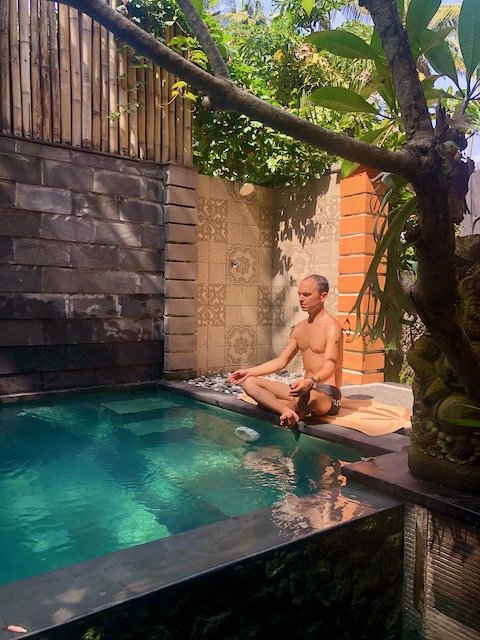
Like exercising keeps your body healthy, meditation is the medicine that keeps your mind healthy. In a world plagued with anxiety and depression, people should ask themselves why they love spending hundreds of dollars each month on gym membership but can’t spend 10 minutes everyday to focus on their mind.
Morning meditation helps in so many areas and it is so important that it is the first thing I do after waking up and using the bathroom. Here are the benefits I get from practicing meditation:
- I train my mind to focus
- I create a state of peacefulness within me
- I remind myself let go of any suffering I might have or feel
- I remind myself to stay in the present moment
I’ve noticed that this helps me lower my stress, connect better with others, improve my focus and reduce the chatter that sometimes takes place in my brain.
What is meditation?
There are many ways to meditate. You can practice sitting meditation, standing meditation, walking meditation, laying down meditation and so on. For me, the meditation that works the best when I wake up is sitting meditation and the one I will be discussing here. The underlying mechanisms are the same with other forms of meditation, what usually differs is the execution.
How to meditate?
Set up
- Find a quiet place
- Get comfortable and prepare to sit still for a few minutes
- Start your practice
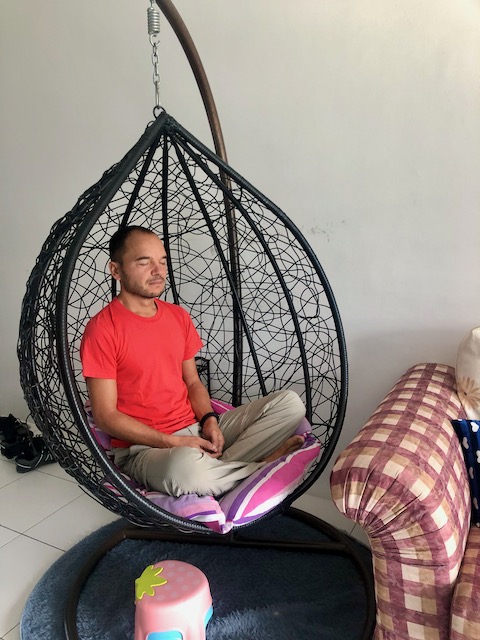
Get into it
- Close your eyes
- Follow one of the techniques below
- Complete your practice & reflect about it (in your gratitude journal)
Technique #1 – Breath awareness meditation
In this technique, you pay attention to your breath slowly and deeping, counting your breath or simply focusing on your breath and ignoring other thoughts that enter the mind. Technique #2 – Body scan.
In this technique, you would start from the top of your body (from the crown of your head) and very very slowly scan every every part of it until you get to your feet. I can do a full body scan as quickly as 2 minutes and as slow as 20 minutes! What about you?
Technique #2 – Mindfulness meditation
In this technique, you focus on the present moment by paying attention to your surroundings. It is important that you do not make justment of what is happening around you but instead, acknowledge what is happening and let your mind move on.
Once you get into a solid meditation practice, you can dedicate a practice to a specific purpose.
What to meditate for?
Meditation #1 – Training your mind
- One way to practice meditation is by training your mind to monitor any thoughts passing by, acknowledging them and then letting them go.
- This is quite hard as (especially for beginners) as it is very easier to grab on a thought and then dwell on them for minutes (example: your hear the noise of a car passing by, rather than letting it go and getting back to your practice you think about where that car might be going to, which led you to thinking about the hike you want to do next weekend and who you would like to invite and so on…)
- Mastering this technique takes a lot of practice.
- How does it help in your daily life? This has been helping me quickly acknowledging with something upsetting happen (like I lost something) and rather than dwelling on that item, I recentrer quickly myself on what
Meditation #2 – Practicing gratitude
- Another way to practice meditation is by dedicating your practice to someone else.
- Think about the person you want to dedicate your practice towards.
- Start by expressing gratitude towards this person.
- As you go through your practice, think about what you want to wish for (success, prosperity, happiness…) or what you want them to be free from (an illness, a suffering they are going through…)
- How does it help in your daily life? In positive psychology research, expressing gratitude is strongly and consistently associated with greater happiness! (source)
How much time does it take?
I started practicing 5 minutes per day and have now been meditating up to 20 minutes every day.
If you are a beginner, I recommend starting with 5 minutes to get accustomed to the practice. Once you get comfortable with it, slowly introduce 5 minutes increments until it becomes challenging again. It took me about an entire year of daily practice to go from 5 minutes to 20 minutes, so be patient. Also, people suggest that as little as 8 minutes (source) can provide benefits while 20 minutes (source) seems to be the sweet spot.
What is the best way to get started?
You can practice meditation on your own, or – if you are getting started – follow a guided meditation, where someone will guide you through the practice. The best and most affordable way to start with guided meditation is by using FREE apps on your phone. I highly recommend Oak Meditation (available for both iPhone & Android).
I also highly encourage you to take a meditation retreat either in person or online (b/c of COVID19). If you do plan to go to Thailand or are already there, check out any of the following places we’ve been to:
- Introduction to meditation (one day) [Monday or Friday]- Monks offer a full day introduction to Buddhism/meditation at the Wat Suan Dok temple. It is an amazing experience that was very educational. We learned a lot about Buddhism from a philosophy and way of life perspective and we practiced a meditation (sitting meditation, walking meditation and focus meditation). It is a wonderful class, especially if you have zero experience with these concepts. (Register here)
Cost: FREE (Donations are encouraged). - Meditation retreat (2 days overnight stay) [Tuesday and Wednesday] – If you liked the introduction to meditation or already have some meditation experience and want to bring your practice to the next level, then this will be the next step in your learning process. This meditation starts from the Wat Suan Dok temple but you will be quickly transferred to a meditation center away from the city in a beautiful natural surrounding. The retreat starts with a light intro to Buddhism and then goes into practicing meditations and contemplating your food. It ends with a great Q&A session with monk Phra KK who is an amazing person. Highly recommended! Note: This is a silent meditation so from the time you arrive to the time you leave, you will not be able to speak to your peers. (Register here)
Cost: 800 THB per person + 300 THB for a pair of white pants & shirt (or ~24.6 to 36.3 USD).
For more details: check out our Destination Report: Chiang Mai – Part One: What to do, see, eat and avoid.
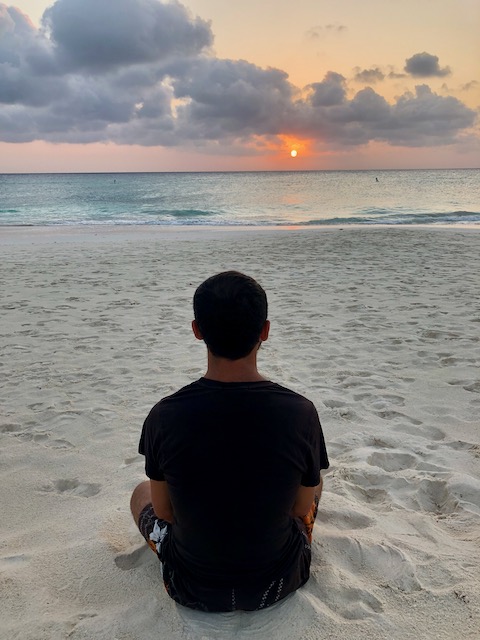
Bottom line
Meditation is a wonderful tool and medicine that is as important for your mind as exercise is for your body. It can be done anywhere, in pretty much any situation and it is entirely free! You can do it for yourself but also dedicate it to your loved ones and it has amazing benefits.
Since practicing meditation regularly about 2 years ago, I’ve noticed a greater sense of calmness, positive attitude, general optimism in life and overall happiness. Meditation has also definitely prepared me to weather storms like the COVID19 pandemic more easily than it has been for other people I know. And while some people might think it is easier for us, since we decided to come shelter ourselves in Taiwan, it is important to remind everyone that – like many of you – how bad the pandemic was going to affect the planet and had no idea what life in Taiwan was going to turned out when we decided to escape Bali. But rather than panicking, we made calm and rationale decision. An approach we are still utilizing today to look at our options for the rest of 2020 and beyond – stay tuned for more on that!. One benefit of being nomadic (and citizen of the world in a way)
If anything, meditation reminds me everyday about the immense chance I have to be alive as a human being on this beautiful planet. Meditation reminds me of the freedom I have to decide what I want each of my day looks like. And even in times of crisis, being a nomad still has a lot of benefits.
What about you? Do you practice meditation and if so what type of meditation do you practice and how long do you meditate? What major change in your day and life have you noticed after starting a meditation practice? Let us know by leaving a comment below!
Note: if you want to know more about my morning routine, please make sure to subscribe to our newsletter (link below) as I am planning on sharing every single element of my morning practice.
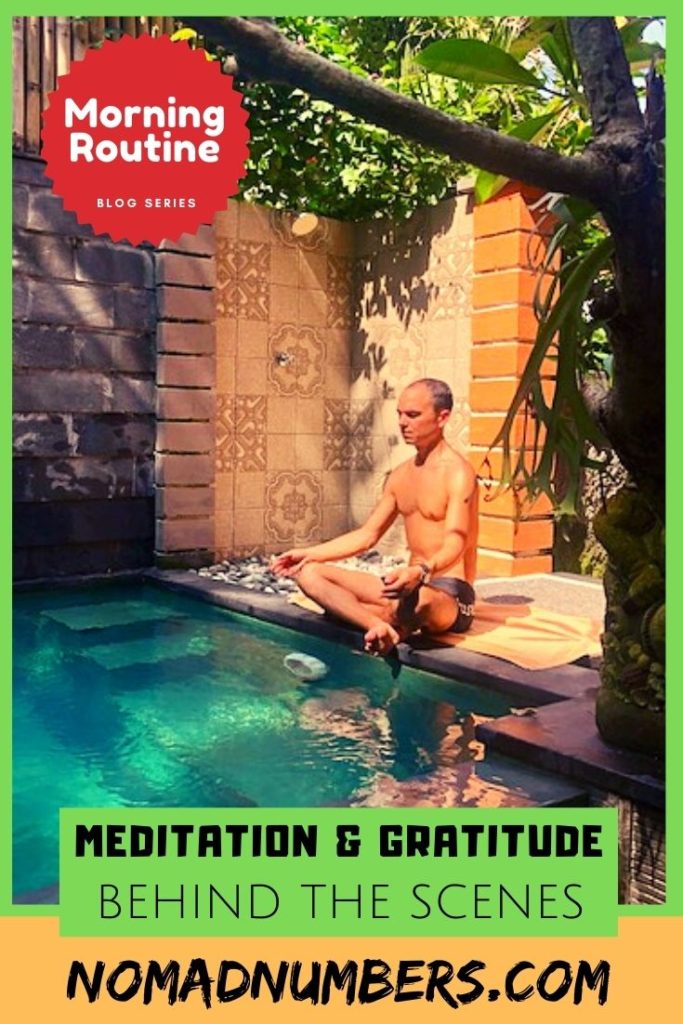

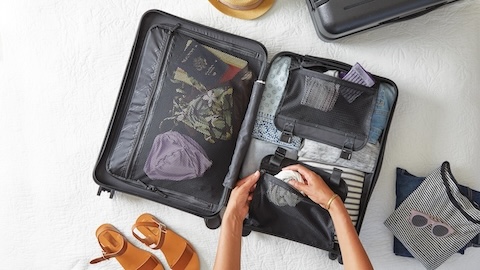
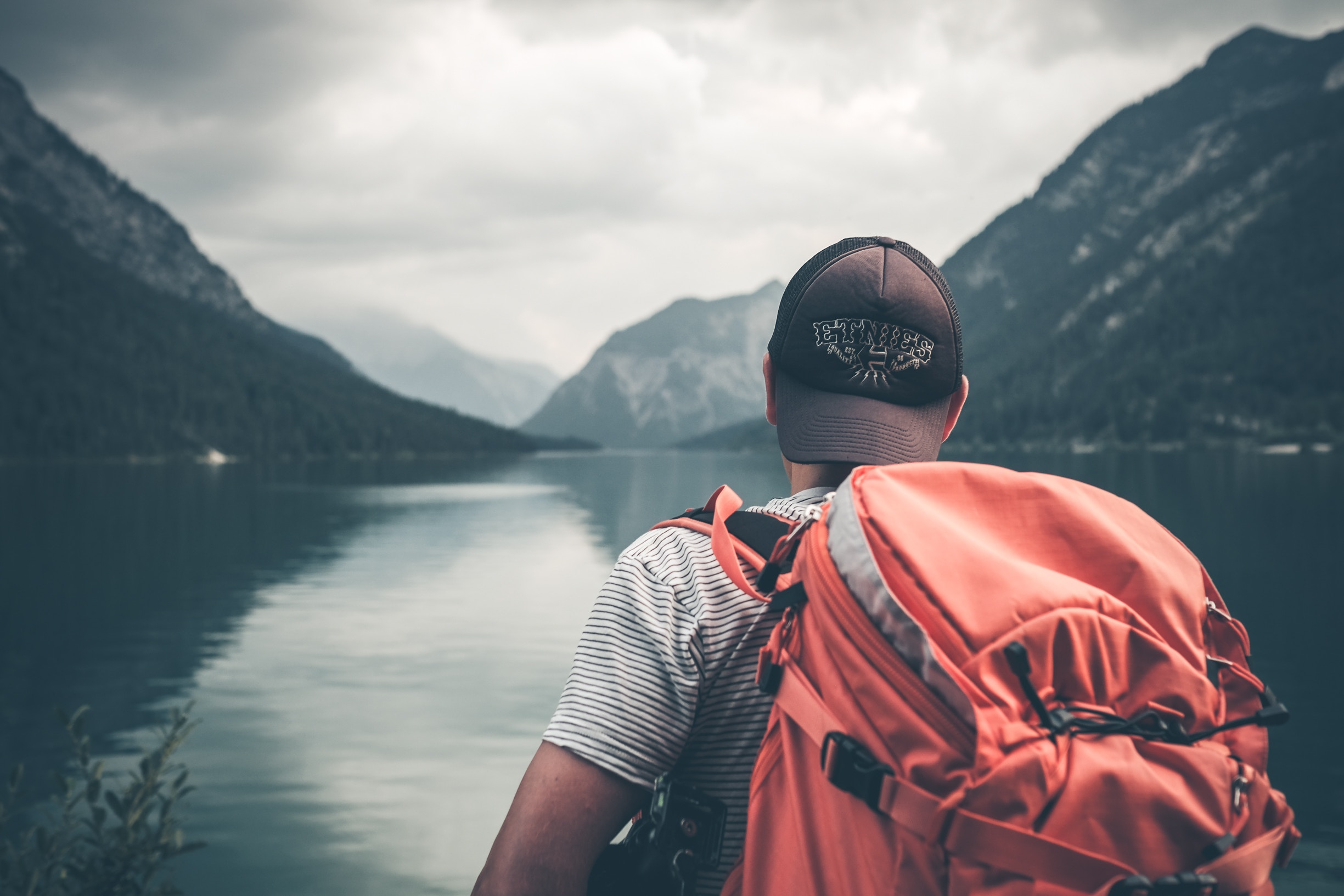
5 Comments
Michelle C · August 10, 2020 at 4:34 pm
This post is so useful to all of us as we find ourselves re-examining our daily lives and routines during this unprecedented pandemic. The photos are great as well – is this your first time showing photos of your face, Mr. NN? I remember previous posts explaining how both of you choose not to show your faces online. The decision is totally up to both of you, of course. I’d just like to share feedback that I am glad to see your face and think it adds a personal and relatable touch to an already fantastic blog!
Mr. Nomad Numbers · August 11, 2020 at 3:35 am
Hi Michelle. Thanks for your comment and for pointing this out. It is actually the second time I am sharing my picture publicly.The first time was last week in our latest YouTube video (included at the end of our last post) where you can see and hear me speak French for a solid 3 minutes 🙂
At this point I am experimenting since we have so much content we share with friends and family that we can’t share with you all because we would have to mask our faces to remain anonymous. If people find our blog more personal and relatable we might consider do more so this is great feedback. We are still a relatively modest blog so the risk we face with someone hunting us down is still relatively slow but who knows. If you have feedback on this feel free to share! The Tim Ferris article about where he shared the trouble he seriously got into has he started become modestly popular has made us think for sure! (https://tim.blog/2020/02/02/reasons-to-not-become-famous/)
Michelle C · August 15, 2020 at 3:05 pm
Thanks for pointing out your last Youtube video – I’d missed that! What a wonderful video that makes us all want to go biking outside to enjoy nature 🙂
I’ve read the Tim Ferris article before too, and it’s a great cautionary tale. I agree that it can be better safe than sorry. I guess taking it slow and continuing to measure peoples’ responses will help you decide what makes you feel most comfortable!
Mr. Nomad Numbers · August 16, 2020 at 1:12 am
Definitely!
Slow travel morning routine #3: Long Form Journaling — Nomad Numbers · February 28, 2022 at 3:07 pm
[…] routine, we previously covered bullet journaling and how it helps us turbocharge our day and meditation: the daily exercise for your mind. It is now time to dive into another routine we’ve been experiencing: long form […]